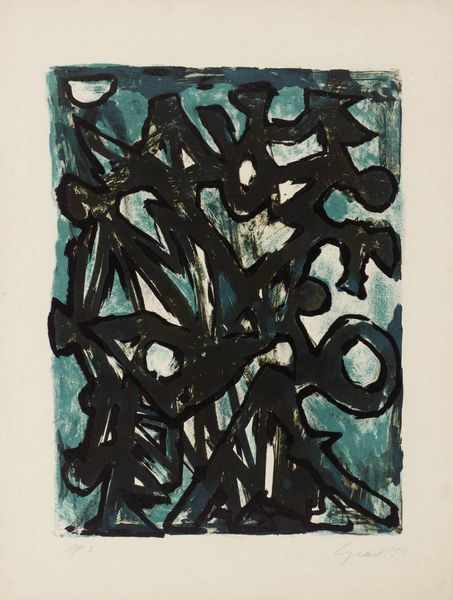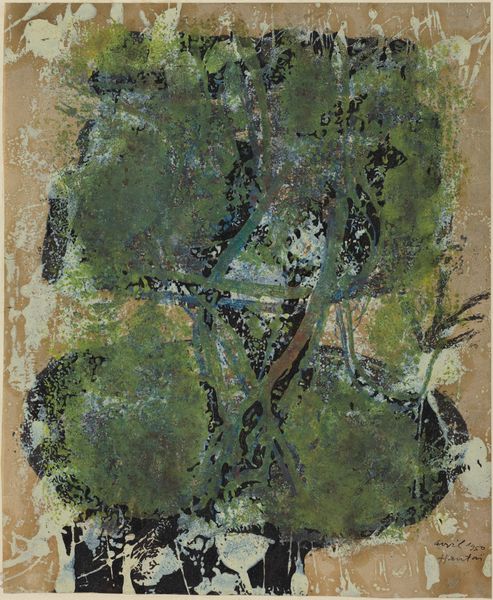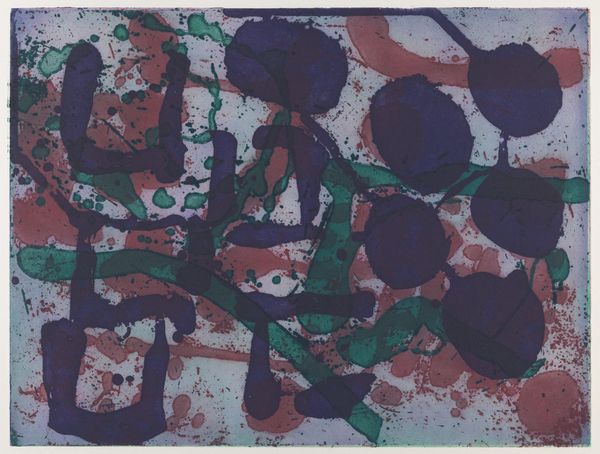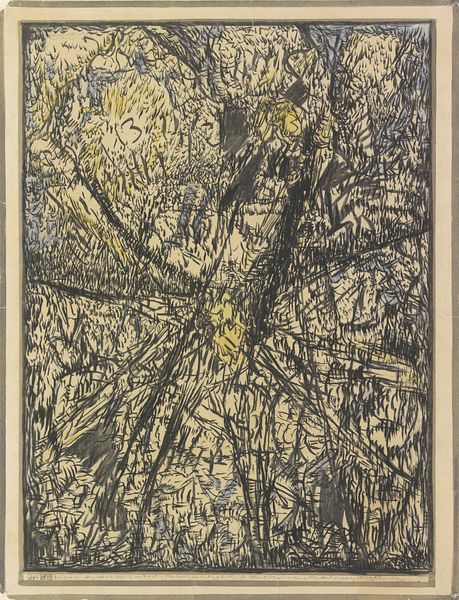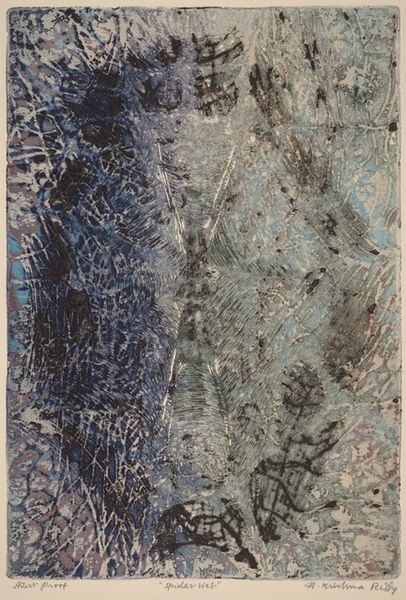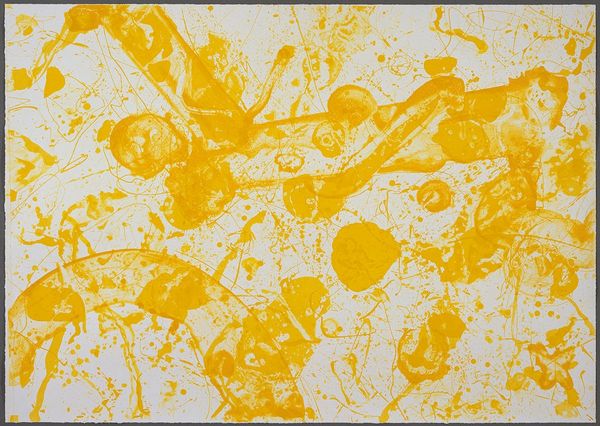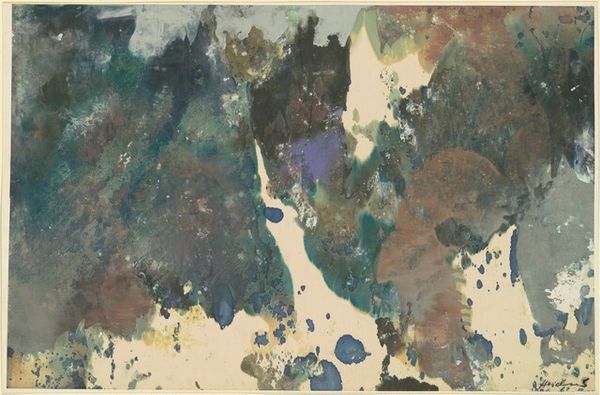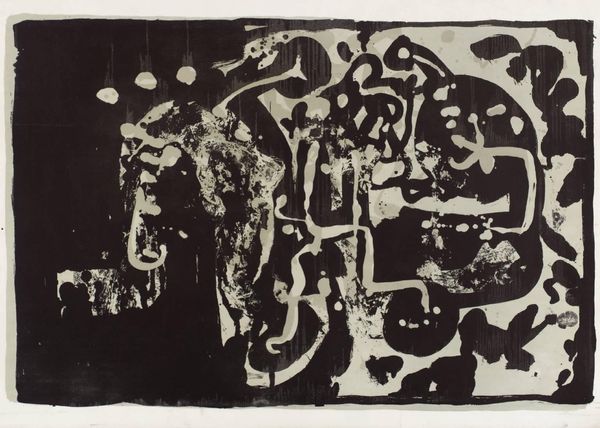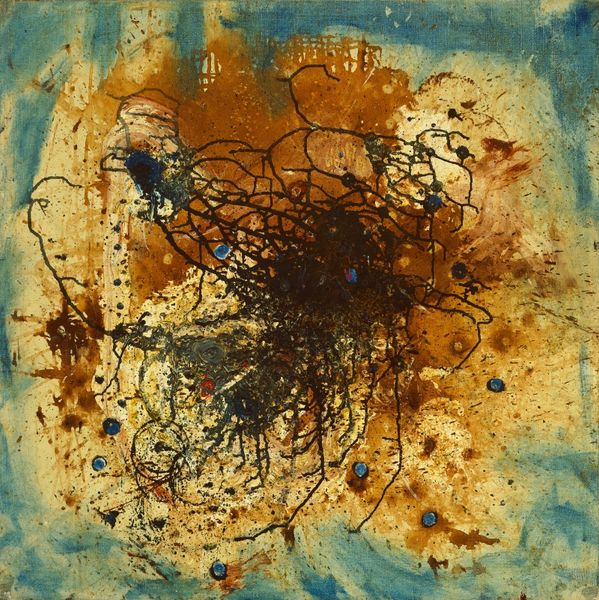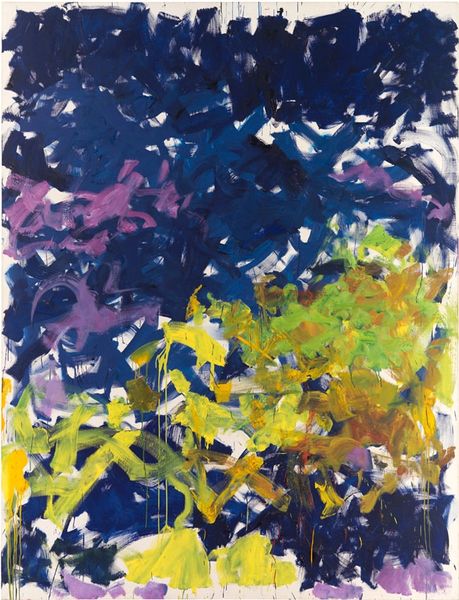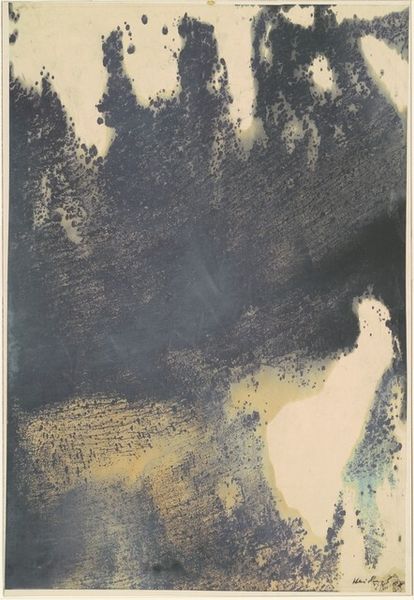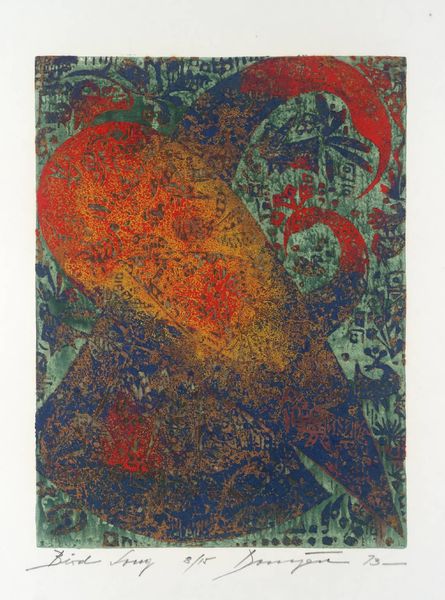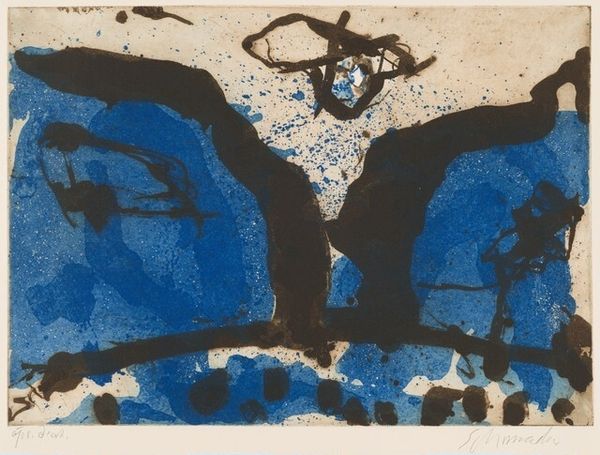
painting, watercolor
#
organic
#
art-nouveau
#
painting
#
watercolor
#
symbolism
Dimensions: height 662 mm, width 441 mm
Copyright: Rijks Museum: Open Domain
Curator: Before us hangs Gerrit Willem Dijsselhof’s “Wall Panel with Orchids,” a watercolor painting from around 1892, residing here at the Rijksmuseum. Editor: My first impression is how unsettling the juxtaposition is. Those delicately rendered orchids against the turbulent, almost apocalyptic, background. Curator: Dijsselhof was working in a fascinating cultural moment. Think of Art Nouveau's flourishing alongside Symbolism. His choice to paint these orchids wasn’t merely decorative. It reflects a growing interest in the organic, aligning with the Symbolist desire to represent inner states of being through the natural world. Editor: The method enhances that tension, doesn't it? Watercolors feel traditionally delicate. Yet here, they’re applied with such varying density. The background appears almost corroded. This piece challenges assumptions about "high art," since watercolor on paper can also be deployed toward interior design, in other words a craft. It's not only about what is depicted but *how*. Curator: Precisely! Dijsselhof understood the political charge within imagery and artistic movements. He presented the artwork, making commentary on the artistic establishment and social tastes. Did art reflect society, or did it attempt to reshape it? These flowers, arranged for viewing, seem burdened by the world behind them. Editor: Yes, those churning blues and browns behind the fragile orchids suggest a precarity, which speaks to production— the making of "art" or simply making a living. The orchids' beauty depends, parasitically maybe, on everything behind it. There's no sense that it could hold up independently, but the way the artist handles pigment implies the making of both the figure and ground. Curator: Viewing Dijsselhof’s artwork, you grasp its participation in both social conversation and a history of stylistic concerns. Editor: I’m struck, re-examining the details, by how many kinds of making and social work must have contributed to bringing this to the present moment for viewing.
Comments
rijksmuseum about 2 years ago
⋮
In the first half of the 1890s Dijsselhof experimented with drawings done in Indian ink and watercolour on large sheets of paper. He incorporated these drawings in the wood panelling that he designed for interiors. He took abstraction furthest in Orchids; flowers can just barely be made out amid a whirlwind of forms and colours.
Join the conversation
Join millions of artists and users on Artera today and experience the ultimate creative platform.
